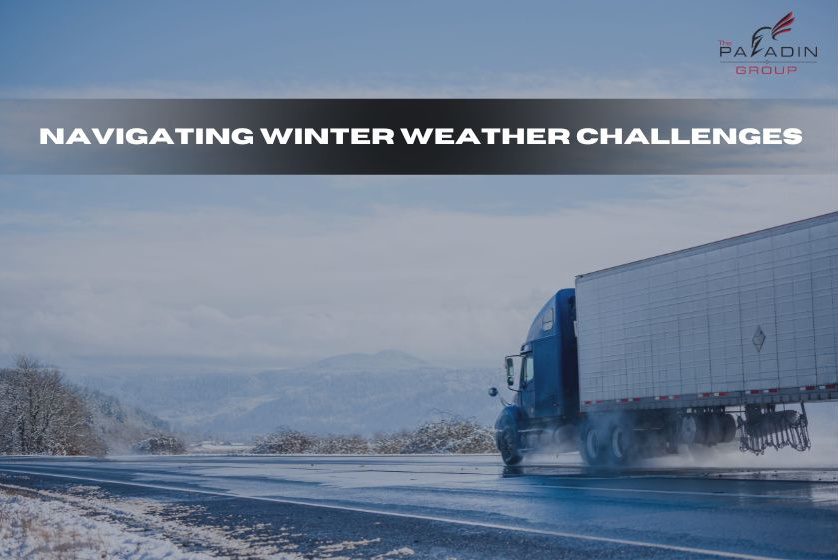
Navigating Winter Weather Challenges
December 1, 2023 8:00 amThis post was written by: Channing Puls
As winter season sets in, commercial truck drivers face a unique set of challenges on the road. The fluctuating temperatures, snow, and icy conditions demand a heightened focus on safety in the face of changing temperatures during winter driving.
Tire Maintenance and Pressure:
Fluctuating temperatures can impact tire pressure. Drivers need to regularly check and adjust tire pressure to ensure optimal traction on icy or snow-covered roads.
Consider replacing tires that are close to minimum tread depth tolerance to maximize traction and fuel efficiency.
Brake System Inspection:
Cold temperatures can impact braking systems. Drivers need to routinely inspect and maintain brakes to ensure drums are not frozen to the shoe. That way, the wheels spin freely. Including checking for frozen brake lines ensuring brake components are working properly.
A properly functioning anti-lock braking system (ABS) can enhance control during sudden stops on icy surfaces.
Pre-Trip Inspections:
Conduct thorough vehicle inspections, paying close attention to lights, reflectors, and all visibility-enhancing features.
Verify the defrost system and windshield wipers are functioning properly to maintain clear visibility through windows and mirrors.
Adjusting Driving Habits:
Encourage drivers to adjust their driving habits to the weather conditions. This may include reducing speed, increasing following distances, and avoiding sudden maneuvers.
Emphasize the importance of smooth acceleration and deceleration to prevent skidding.
Load Distribution:
Properly distribute loads to optimize weight distribution. This can improve stability and control, especially on slippery surfaces.
Secure loads correctly to prevent shifting during transit.
Emergency Preparedness:
Drivers should equip trucks with emergency supplies, including blankets, non-perishable food, and water in case of unexpected delays or breakdowns.
Provide emergency procedures, such as dealing with snow, icy conditions, vehicle breakdowns, and communication protocols.
Monitoring Weather Conditions:
Encourage drivers to stay informed about weather forecasts along their routes. Knowing about upcoming storms or drastic temperature changes allows better preparation and trip planning.
Send fleet messages to keep drivers updated on real-time weather conditions and road closures.
Training and Education
Regularly conduct safety training programs that specifically address winter driving challenges.
Provide resources and information on safe driving practices, especially during adverse weather conditions.
Trucking during the winter requires a proactive approach to safety, particularly with the unpredictable nature of changing temperatures. With these types of safety measures, drivers and fleet managers can mitigate risks during the winter months.


